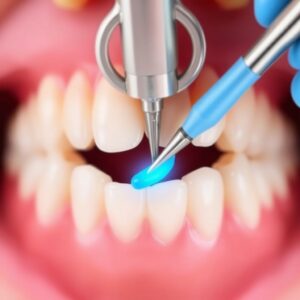Permanent Tooth Filling Cost: Types, Procedures, and Factors Affecting Pricing
A tooth filling is one of the most common dental procedures, used to repair cavities, cracks, or minor tooth damage. However, the cost of a permanent tooth filling can vary widely based on the material used, the dentist’s location, and whether insurance covers the procedure.
If you’re considering getting a permanent filling, you likely have questions like:
-
How much does a permanent tooth filling cost?
-
Which filling material is best for durability and aesthetics?
-
Does dental insurance cover fillings?
This comprehensive guide will answer all your questions, providing an in-depth look at permanent tooth filling costs, types, procedures, and factors that influence pricing.

2. What Is a Permanent Tooth Filling?
A permanent tooth filling is a dental restoration used to repair a decayed or damaged tooth. Unlike temporary fillings (which last a few weeks), permanent fillings are designed to last for years, sometimes even decades, depending on the material.
Why Are Fillings Needed?
-
To treat cavities caused by tooth decay
-
To repair cracked or broken teeth
-
To replace old, worn-out fillings
-
To restore teeth after minor damage
3. Types of Permanent Tooth Fillings
A. Amalgam Fillings (Silver Fillings)
-
Material: A mix of metals (mercury, silver, tin, copper)
-
Durability: 10–15 years
-
Cost: $50–$150 per tooth
-
Pros: Affordable, durable, quick to place
-
Cons: Visible, contains mercury (controversial), may cause tooth sensitivity
B. Composite Resin Fillings (Tooth-Colored Fillings)
-
Material: Plastic and glass mixture
-
Durability: 5–10 years
-
Cost: $90–$250 per tooth
-
Pros: Natural appearance, bonds well to teeth
-
Cons: Less durable than amalgam, may stain over time
C. Ceramic Fillings (Porcelain Fillings)
-
Material: High-quality porcelain
-
Durability: 15–20 years
-
Cost: $250–$450 per tooth
-
Pros: Stain-resistant, aesthetically pleasing
-
Cons: Expensive, requires multiple visits
D. Gold Fillings
-
Material: Gold alloy
-
Durability: 20+ years
-
Cost: $250–$4,500 per tooth
-
Pros: Extremely durable, biocompatible
-
Cons: Very expensive, noticeable appearance
E. Glass Ionomer Fillings
-
Material: Acrylic and glass blend
-
Durability: 5 years
-
Cost: $75–$200 per tooth
-
Pros: Releases fluoride (good for children), blends with teeth
-
Cons: Weak, not ideal for large cavities
4. Factors Affecting the Cost of Permanent Tooth Fillings
A. Material Used
-
Amalgam is the cheapest, while gold and ceramic are the most expensive.
B. Tooth Location and Size of Cavity
-
Front teeth (aesthetic fillings) cost more than molars.
-
Larger cavities require more material, increasing the price.
C. Dentist’s Expertise and Location
-
Urban dentists charge more than rural ones.
-
Specialists may have higher fees.
D. Dental Insurance Coverage
-
Some plans cover 50–80% of filling costs.
-
Cosmetic fillings (composite/ceramic) may not be fully covered.
E. Additional Procedures Required
-
X-rays, anesthesia, or tooth preparation can add to costs.
5. Average Cost of Permanent Tooth Fillings
| Filling Type | Average Cost (Per Tooth) | Lifespan |
|---|---|---|
| Amalgam (Silver) | $50–$150 | 10–15 years |
| Composite Resin | $90–$250 | 5–10 years |
| Ceramic (Porcelain) | $250–$450 | 15–20 years |
| Gold | $250–$4,500 | 20+ years |
| Glass Ionomer | $75–$200 | 5 years |
6. Procedure for Getting a Permanent Tooth Filling
-
Examination & X-rays – Dentist checks decay extent.
-
Anesthesia – Numbing the area (if needed).
-
Decay Removal – Drilling out the damaged part.
-
Filling Placement – Filling material is applied.
-
Polishing & Shaping – Ensuring a natural bite.
7. Pros and Cons of Different Filling Materials
(Detailed comparison of durability, aesthetics, cost, and safety.)
8. How to Make Dental Fillings Last Longer
-
Avoid chewing hard foods (ice, nuts).
-
Maintain good oral hygiene (brushing, flossing).
-
Visit the dentist regularly for check-ups.
9. Does Dental Insurance Cover Fillings?
-
Most plans cover amalgam at 80% and composite at 50%.
-
Cosmetic fillings may require out-of-pocket payment.
10. Alternative Treatments to Dental Fillings
-
Dental Bonding – For minor chips/cracks.
-
Inlays/Onlays – For larger cavities.
-
Crowns – For severely damaged teeth.
11. FAQs About Permanent Tooth Fillings
Q1: How long does a permanent filling last?
-
Amalgam: 10–15 years | Composite: 5–10 years | Ceramic/Gold: 15+ years.
Q2: Are tooth-colored fillings as strong as silver ones?
-
No, composite is less durable but more aesthetic.
Q3: Can I get a filling without drilling?
-
Laser dentistry is an option for early decay.
Q4: Does getting a filling hurt?
-
Local anesthesia prevents pain during the procedure.
12. Conclusion
Permanent tooth filling costs vary based on material, location, and dentist fees. Amalgam is the most affordable, while ceramic and gold offer longevity. Dental insurance may reduce costs, but cosmetic options often require extra payment. Regular dental care ensures fillings last longer.


